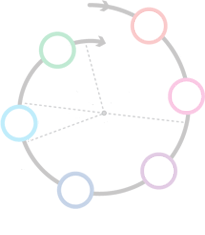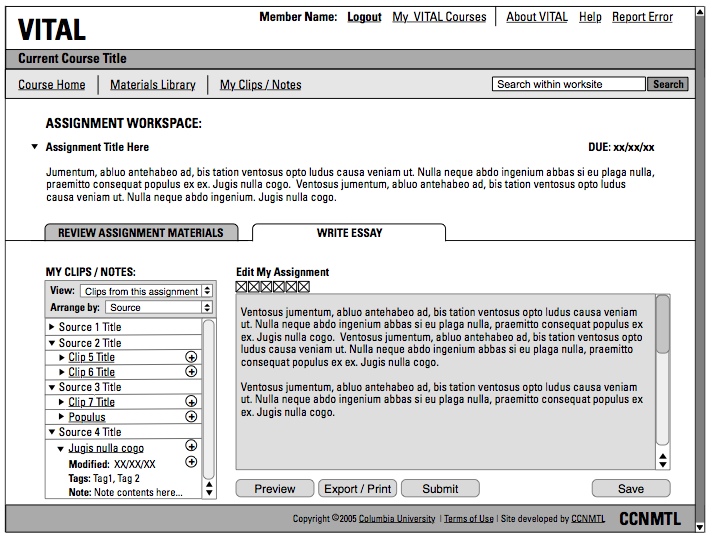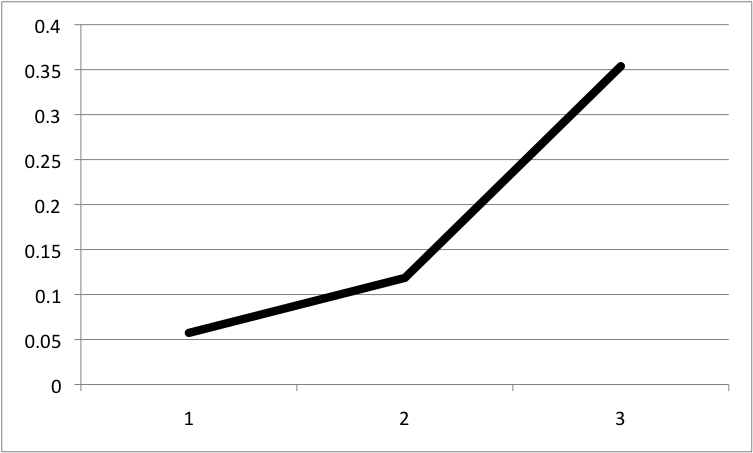Cases

Project Overview: VITAL: Early Childhood Mathematics Education

|
Partner(s):
Herb Ginsburg Teachers College Released: September 2006 Archived, no longer available. |
The National Science Foundation is supporting CCNMTL and Herbert P. Ginsburg, Professor of Psychology and Education at Teachers College, with a grant to continue the development of Video Interactions for Teaching and Learning (VITAL): A Learning Environment for Courses in Early Childhood Mathematics Education. The project's main goal is to develop and distribute a resource that will enhance undergraduate- and graduate-level programs in mathematics education to address the national need for improved teacher training for early childhood mathematics (pre-K through grade 3). During the five-year grant period, we are working to (1) create model undergraduate and graduate courses in early childhood mathematics education, (2) design a new version of VITAL based on extensive user testing and formative evaluations, (3) test VITAL and the new curriculum at partner universities around the country, and (4) conduct an evaluation of student learning outcomes.
Communication: VITAL
We have focused our evaluation of VITAL's impact on student learning in the context of Prof. Ginsburg's course on the development of mathematical thinking at Teachers College. The underlying hypothesis is that the use of the VITAL Web environment, with its emphasis on close viewing of concrete examples of children's thinking, interviewing techniques, and teaching practice, aids in the development of the teacher's ability to use direct evidence to support theoretical analysis. The further underlying assumption is that the ability to ground theory in evidence increases the teacher's belief in the usefulness of theory for practice and makes it a more solid foundation for pedagogical decision-making.
Some tools we developed for this evaluation include:
- Usability testing with wireframe and draft versions of the VITAL system
We developed paper-based ("wireframe") and demo versions of the VITAL interface to allow a sample of prospective users to navigate the site while talking about their experience, thereby giving us feedback on whether the design made sense and would help students accomplish their work. Revisions we made at this stage of development were much easier to implement and avoided more costly changes later, once the full system was built.
 | Figure 1: Wireframe for VITAL essay space, with video clips on the left and essay text area on the right |
- Pre- and post-tests of teachers' beliefs about developmentally appropriate practice
We administered questionnaires before and after VITAL-based courses to assess teachers' views on how young children learn mathematics, what is developmentally appropriate mathematics instruction for this age group, the role of assessment in early childhood classrooms, and their views of themselves as capable teachers of mathematics. We measured small increases in teachers' beliefs on these topics.
- A "critical incident report" to capture the role of VITAL in learning
The Critical Incident Technique is a method used to collect observations of human behavior in defined situations (Flanagan, 1954). The technique involves collecting structured, open-ended reports that typically include (1) a description of the situation, (2) an account of the actions or behavior of the person involved in the incident, and (3) the outcome or result. We developed a questionnaire that prompted students to recount when VITAL had a significant impact on their learning. We found slight correlations between understanding the purpose of VITAL and performance in the course.
 | Figure 2: Comparison of pre- and post-test results of critical incident report, suggesting improvement in students' understanding of the purpose of the technology |
- Qualitative analyses of student writing in VITAL
We developed an empirical method for analyzing student writing in VITAL to detect improvements in the argument writing skills over time. Our results show that students learn to make more judicious claims, cite more evidence relative to the number of claims, and make explicit connections between their claims and evidence. In addition, some students also develop a sort of "intellectual humility" with regard to the certainty of their claims and the need for more information.
 | Figure 3: Mean increase, over three samples, in the number of statements showing "intellectual humility" by 20 randomly selected students |
For more information about the VITAL mathematics project, including recent publications, please visit https://ccnmtl.columbia.edu/vital/nsf/.


